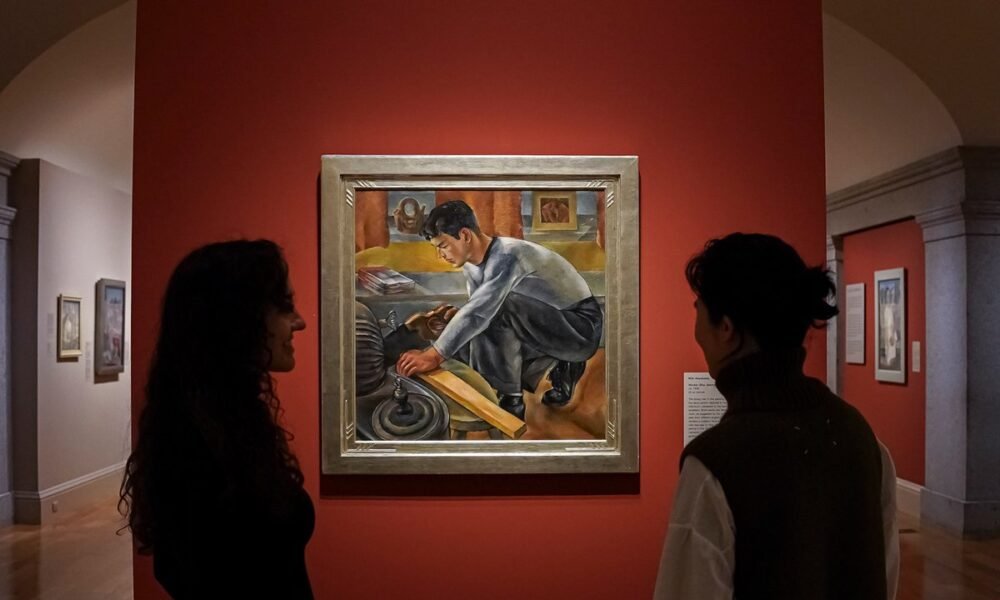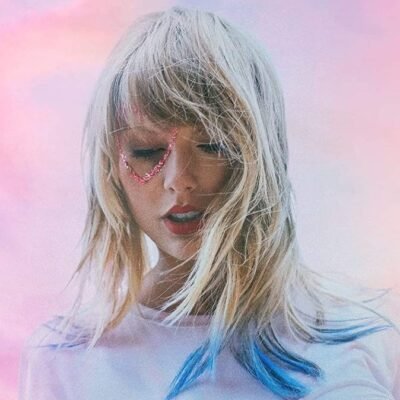
Exhibitions reveal hidden stories of interned Japanese American artists – The Art Newspaper
The last Japanese incarceration camp in the US closed in 1946, but the stories of American artists of Japanese descent who were held there remain elusive. Exhibitions such as Pictures of Belonging: Miki Hayakawa, Hisako Hibi and Miné Okubo (until 17 August) at the Smithsonian American Art Museum (SAAM), Washington, DC, and The Life and Art of Tokio Ueyama (until 1 June) at the Denver Art Museum (DAM), along with the recent touring show Chiura Obata: American Modern (2018-20), help to understand the full oeuvre of important American Modernists. In so doing, the shows have made clear that many artists of the Japanese diaspora of the Second World War era remain little known and underappreciated.
Pictures of Belonging presents its three featured artists starting on similar paths that lead to different outcomes. Hayakawa and Hibi immigrated with their families as children and pursued art education at the California School of Fine Arts in the 1920s. Okubo was born in Riverside, California, and arrived at the University of California Berkeley in 1931. ShiPu Wang, a professor of art history at University of California Merced and the curator of Pictures of Belonging, says all three women were critically acclaimed and highly visible artists before the war. In 1929 Hayakawa exhibited 150 paintings at San Francisco’s Golden Gate Institute and four paintings at the opening of the San Francisco Museum of Art (now SFMoMA) in 1935. The San Francisco Examiner called her work “genius”. Hibi and Okubo also received honours, scholarships and exhibitions, including the Golden Gate International Exposition in 1939. While Diego Rivera installed his massive fresco Pan American Unity at the Exposition, Okubo demonstrated fresco painting techniques nearby.
Okubo was working on a Federal Arts Project mural in Oakland when Pearl Harbor was attacked in 1941. Travelling more than five miles from home or outside the hours of 8pm to 6am was prohibited. She obtained a special travel permit for her daily commute to Oakland to complete her federal mural commission. On 19 February 1942, US president Franklin D. Roosevelt issued an executive order forcing 120,000 Japanese Americans to abandon their homes and businesses along the West Coast. Three days after completing her mural, Okubo and her brother were evacuated to Tanforan Assembly Center in San Bruno, California. Hibi, now married with two small children, sold her belongings and left her art with friends for safekeeping. Hayakawa abandoned her California residence and moved to Santa Fe, New Mexico, to avoid incarceration.
By establishing Hibi, Okubo and Hayakawa as important contributors to American Modernism before the war, Wang underlines the peculiar absence of their names from the last 80 years of American art texts and surveys, proposing several reasons for this failure in the field. Before 1952 foreign-born Asians were not eligible to become American citizens. Artists who were not citizens were often excluded from exhibitions or acquisition. When Alfred Barr organised the 1929 show Paintings by Nineteen Living Americans at the Museum of Modern Art in New York, he qualified the inclusion of Yasuo Kuniyoshi by noting that the artist was an “American, born in Japan”. It was an important recognition of the artist when other museums at the time had restricted funds, that allowed only the purchase of work by American citizens.
Creating art in adversity
Hibi produced an astounding 100 works while incarcerated, Okubo completed 198 drawings that later became the 1946 graphic novel Citizen 13660. Ueyama, Obata and Hibi all organised art programmes in their respective camps. However, limited supplies sometimes meant art was made with unstable materials. Ueyama’s Desert Brush (1945) and Untitled (Amache Sunflowers) (1943) are oil paintings on canvas taped to Celotex, a type of wall insulation that becomes brittle over time. J.R. Henneman, the curator of Western American art at the DAM and of The Life and Art of Tokio Ueyama, notes that the building material is commonly seen among Ueyama’s peers and it is particularly challenging to preserve work when paint is applied directly to this support. Proposed exhibitions of Japanese American artists from this period require institutional partners to accept the costs of conservation. Wang adds that “a simple small painting can cost thousands of dollars for it to be ready for the wall and museums consider that”.
When Chiura Obata: American Modern toured, it featured an astonishing 150 pieces, while Pictures of Belonging includes 100 works and documents from three artists and The Life and Art of Tokio Ueyama features just over 40 objects. The relative scarcity of works may be partly due to US museums only becoming interested in work by Modern artists of Japanese ancestry recently, leaving the artists’ families as caretakers for decades. Obata’s descendants are visible advocates at curatorial talks and exhibitions, while Okubo established a trust to preserve and promote his work.“The [Okubo] trustee said I was the first person in 20 years to make an effort to work with her,” Wang says. Also, when family are the primary archivists, the historic record privileges those with children. Hayakawa died in 1953 with no heirs and, in the mid 1980s, much of her work was sold to private collectors by Santa Fe East Gallery and is now missing.
Melissa Ho, the curator of 20th-century art at SAAM, says that when museums secure art or primary documents, it allows scholars to advance the field, and the absence of institutional support can equate to cultural invisibility. An artist’s work is not fully understood by only witnessing the injustice survived, but also by the humanity preserved.
• Pictures of Belonging: Miki Hayakawa, Hisako Hibi and Miné Okubo, Smithsonian American Art Museum, Washington, DC, until 17 August
• The Life and Art of Tokio Ueyama, Denver Art Museum, until 1 June







No Comment! Be the first one.